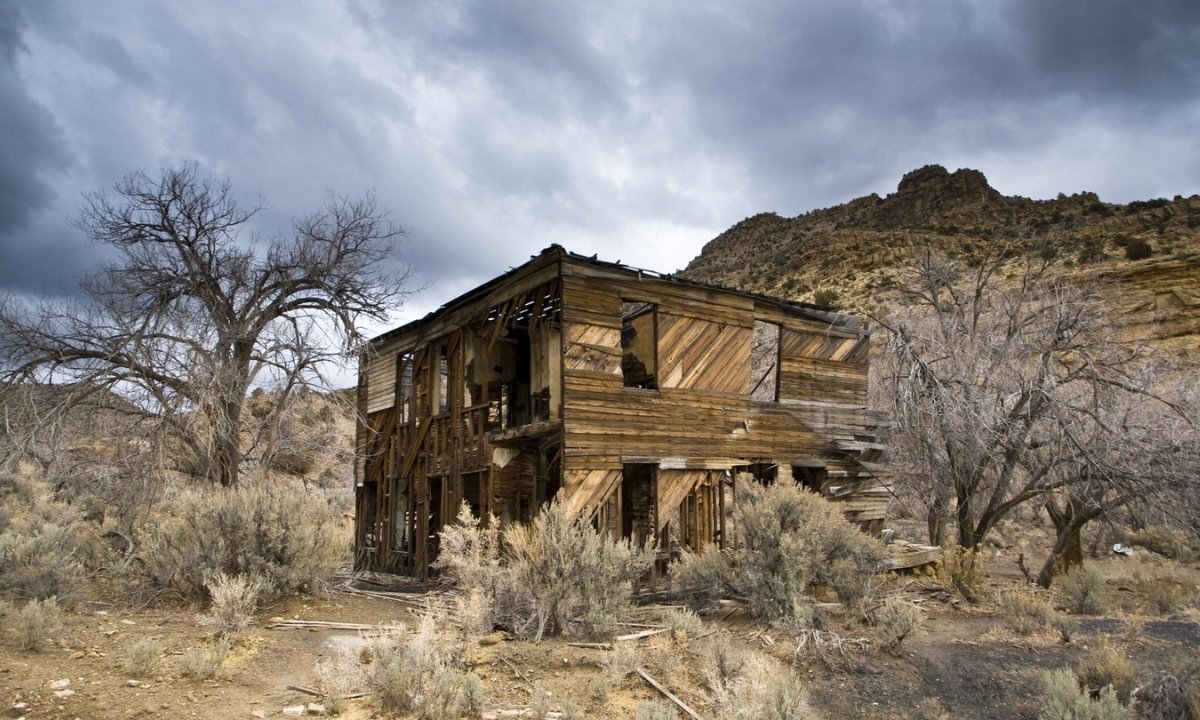Secrets Of Utah’s Abandoned Silver Mining Camp Bunkhouses

Have you ever wondered what life was like in an old mining camp? Utah's abandoned silver mining camp bunkhouses hold many secrets from the past. These structures, once bustling with miners, now stand silent, offering a glimpse into a bygone era. Walking through these bunkhouses, you can almost hear the echoes of conversations, the clinking of tools, and the hustle of daily life. Each building tells a story of hard work, dreams, and the quest for fortune. Whether you're a history buff or just curious, exploring these bunkhouses is like stepping back in time. Ready to uncover the mysteries of Utah's mining history?
Secrets of Utah's Abandoned Silver Mining Camp Bunkhouses
Utah's silver mining history is rich with tales of fortune, hardship, and adventure. Hidden within this history are the abandoned bunkhouses that once housed miners. These structures, now silent, offer a glimpse into the past. Let's uncover some of these forgotten places.
1. Silver Reef
Silver Reef, located near Leeds, Utah, was once a bustling mining town. The bunkhouses here tell stories of miners who worked tirelessly to extract silver from the sandstone.
- Historical Significance: Silver Reef was unique because it was one of the few places where silver was found in sandstone.
- Current State: Many of the bunkhouses are in ruins, but some structures still stand, offering a peek into the past.
2. Frisco
Frisco, situated in Beaver County, was known for its rich silver mines. The town's bunkhouses were home to miners who worked in the Horn Silver Mine, one of the richest silver mines in the world.
- Historical Significance: Frisco was infamous for its lawlessness and wild west atmosphere.
- Current State: The bunkhouses are mostly dilapidated, but their remnants provide a haunting reminder of the town's vibrant past.
3. Park City
Park City, now a popular ski destination, was once a thriving silver mining town. The bunkhouses here housed miners who worked in the Ontario and Silver King mines.
- Historical Significance: Park City was one of the largest silver mining camps in Utah.
- Current State: Some bunkhouses have been restored and repurposed, while others remain as historical landmarks.
4. Eureka
Eureka, located in Juab County, was a major mining hub in the late 19th and early 20th centuries. The bunkhouses here were home to miners who worked in the Tintic Mining District.
- Historical Significance: Eureka was known for its rich deposits of silver, gold, and other minerals.
- Current State: Many bunkhouses are still standing, though in varying states of decay.
5. Alta
Alta, now famous for its ski resort, was once a bustling mining town. The bunkhouses here housed miners who worked in the Emma and Flagstaff mines.
- Historical Significance: Alta was known for its high-quality silver ore.
- Current State: Some bunkhouses have been preserved, while others have been lost to time.
6. Ophir
Ophir, located in Tooele County, was a small but significant mining camp. The bunkhouses here were home to miners who worked in the Ophir Hill Mine.
- Historical Significance: Ophir was known for its rich silver and lead deposits.
- Current State: The bunkhouses are mostly in ruins, but they still offer a glimpse into the town's mining past.
7. Mercur
Mercur, located in Tooele County, was a major mining town in the late 19th century. The bunkhouses here housed miners who worked in the Mercur and Golden Gate mines.
- Historical Significance: Mercur was known for its rich deposits of gold and silver.
- Current State: The bunkhouses are mostly gone, but some foundations and ruins remain.
8. Tintic
Tintic, located in Juab County, was a significant mining district. The bunkhouses here housed miners who worked in the Eureka Hill and Mammoth mines.
- Historical Significance: Tintic was known for its rich deposits of silver, gold, and other minerals.
- Current State: Many bunkhouses are still standing, though in varying states of decay.
9. Silver City
Silver City, located in Juab County, was a bustling mining town in the late 19th century. The bunkhouses here housed miners who worked in the Silver City and Dragon mines.
- Historical Significance: Silver City was known for its rich silver deposits.
- Current State: The bunkhouses are mostly in ruins, but they still offer a glimpse into the town's mining past.
10. Stockton
Stockton, located in Tooele County, was a significant mining town. The bunkhouses here housed miners who worked in the Ophir and Silver King mines.
- Historical Significance: Stockton was known for its rich silver and lead deposits.
- Current State: Some bunkhouses have been preserved, while others have been lost to time.
Discovering Utah's Hidden History
Exploring Utah's abandoned silver mining camp bunkhouses offers a unique glimpse into the past. These structures, once bustling with miners, now stand as silent witnesses to a bygone era. Walking through these bunkhouses, you can almost hear the echoes of hard work and dreams of striking it rich. The weathered wood and rusted tools tell stories of resilience and ambition. Visiting these sites is not just about seeing old buildings; it's about connecting with history on a personal level. Whether you're a history buff or just curious, these bunkhouses provide a fascinating look into the lives of those who helped shape Utah's mining legacy. So next time you're in Utah, take a detour to these hidden gems. You'll leave with a deeper appreciation for the state's rich history and the people who lived it.

